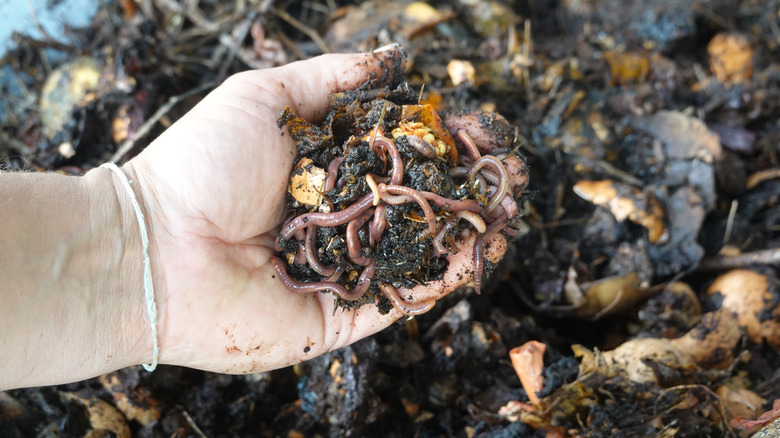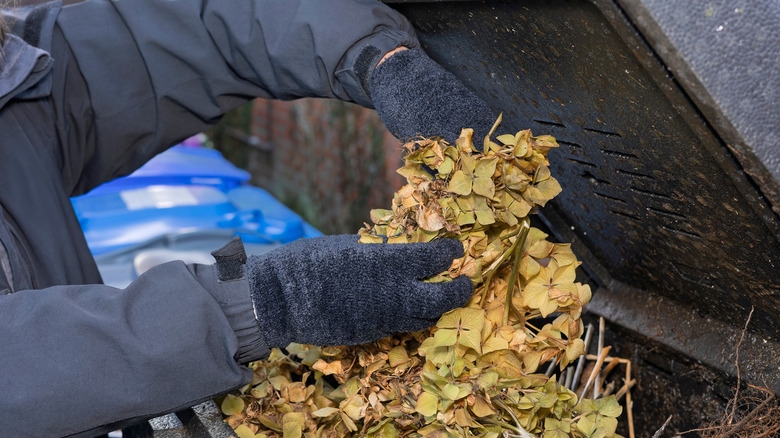Don't Seal Your Compost Bin This Winter - Use It To House Beneficial Wildlife
If your goal is to support wildlife in your yard throughout every season, don't shut down your composting operation in the winter. During the cold months, you want to attract tiny critters by providing a cozy, wildlife-friendly environment. Gardeners never want ants, flies, snakes, or small mammals, such as rats and mice, in their compost. But beneficial invertebrates, like nematodes (the most abundant creatures in compost), beetles, mites, springtails, and worms, are welcome guests that need winter support. Providing an inviting environment for beneficial organisms in your compost will go a long way in maintaining a healthy compost pile.
With a few minor modifications, you can maintain almost the same summer compost processes that attracted and supported these invertebrates in the warmer seasons. Yes, it's true that decomposition slows way down in the winter, but it's still going on. As long as you're not making outdoor compost bin mistakes, like allowing dairy and grease into your pile, only beneficial invertebrates will be attracted. The issue is ensuring accessibility to your compost in the winter, which means not sealing it off.
How to give critters access to your winter compost
If you have an open compost pile, no problem; critters can easily access it. Lay down a top layer of straw or leaves; the critters may have a bit more of a challenge getting into the pile, but they'll be warmer when they are inside. The easiest way to draw invertebrates into your bin-style compost is to ensure it has an open bottom that makes direct contact with the soil. Critters will eagerly make their way up into the pile of yard waste and food scraps. For compost bin designs without open bottoms, you'll want to provide a modicum of access for your compost-friendly organisms. How you choose to do this is up to you, but experts recommend gaps in your bin that are no more than a quarter-inch. This will help block access to rodents.
Modifications for winter composting that help attract beneficials include insulating the entire bin with straw bales, cardboard, or even old carpeting, if the bin design allows it. You can also purchase an insulated bin. Be aware that tips for composting throughout the winter months include turning your pile less often. While regular turning is important for aeration in hot composting, you can loosen up on the frequency so as not to disturb the creatures in your pile. If turning less often, you can also provide alternate aeration by inserting a perforated PVC pipe into your compost, with enough of it sticking out for air intake.
How to keep beneficial organisms warm in your compost this winter
The bigger the pile is, the warmer it is, so early winter is a good time to add more to your pile. You can also consolidate smaller piles into a single pile for warmth. As you feed your compost heap over the winter, chop ingredients into smaller pieces than you normally would to provide more surface area for critters. You'll also want to monitor the snow in your compost. While it provides insulation, too much of it can negatively impact the moisture balance as it melts. Wind is an issue to consider, as well, so consider using a tarp to build a windbreak to protect your pile. If not too much of an undertaking, you could move your compost pile or bin closer to a house or structure to increase warmth.
If you want to create a beneficial and friendly yard and are not yet composting, making your own DIY compost is an essential part of your gardening program. It's not an outlandish idea to start in the winter for the first time. Composters are often advised to apply their summer compost to their gardens in the fall and start fresh with winter compost that can be used in the spring. The critters will appreciate you.


